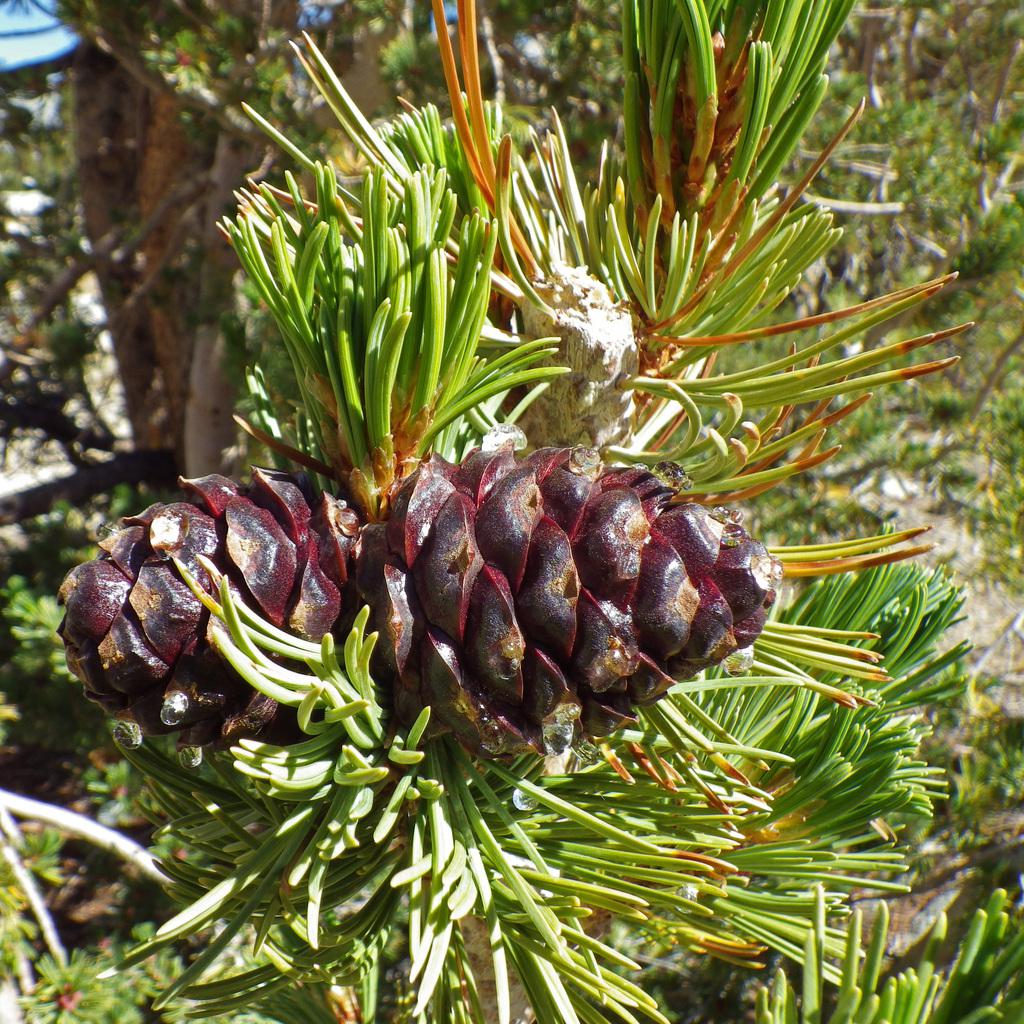White Pine, Pitch Pine, Scrub Pine, Creeping Pine
Whitebark Pines are small to medium-sized conifers (40-60 ft) found close to the tree line in the western mountain ranges of Canada and the United States. The trees vary in shape from small trees with a broad crown to shrubs with multiple stems and upswept branches. The branches are twisted and gnarled if the trees are exposed to strong winds.
The stiff bluish-green needles (1-3 in long) are in bunches of 5 and clustered near the ends of branches. The egg-shaped cones (1.5-3 in long) grow at right angles to the branch and are dark purple when immature. They remain closed and don't release their seeds until the cones fall to the ground and decay.
Whitebark Pines are long-lived species, often living for more than 500 years.
Could it be? Limber Pines are very similar in appearance, but the cones are larger (2.4-4.7 in long), green when immature, and open to release their seeds. Western White Pines have longer needles (2-4 in long) and cones (4-10 in).
Did you know? Whitebark Pines provide food and shelter for many birds and mammals. They have a special relationship with Clark's Nutcrackers. The birds use their long, slender, curved beak to break open the cones and remove the seeds. They then bury the seeds for winter food, often forgetting where they have left them. Grizzly Bears then find and eat the seeds.
See Also: Balsam Fir, Common Juniper, Douglas-fir, Engelmann Spruce, Jack Pine, Lodgepole Pine, Rocky Mountain Juniper, Spruce, Tamarack, Western Hemlock, Western Larch, Western Redcedar







